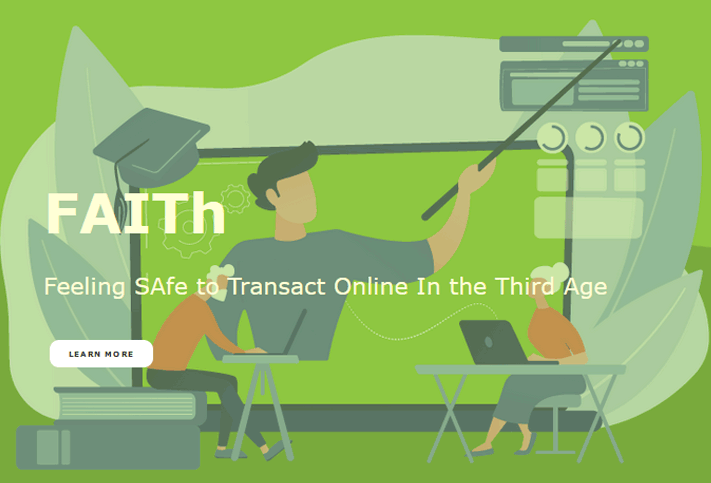
| Short descriptor of good practice |
| FAITh aims to combat the digital marginalisation of adults 55+ by enhancing their capacities and building their trust and confidence to use internet and digital technologies to transact online. In doing so, the project will seek to build a robust support network engaging volunteer peers, the family environment, the community, and local market in an effort to facilitate the use, and ultimately adoption, of ICT in the everyday life of older adults. |
| Type of setting where good practice is delivered |
| Based on national and transnational assessment reports and identified good practices, FAITh will deliver: – Training of older adults 55+ (peers) as Digital Mentors – Engagement and training of professionals from the local community/ market – Sensitization of family/ household members and carers – Implementation & monitoring of individual mentoring plans |
| Time Frame for delivery of good practice |
| The time frame for delivering the good practice outlined in the FAITh project would depend on various factors, including the scope of the initiative, the complexity of the objectives, and the resources available. However, general suggested time frame is as follows: Project Planning and Design (3-6 months), Partnership Building and Stakeholder Engagement (2-3 months), Resource Acquisition and Setup (1-2 months), Training for Digital Mentors (2-3 months), Family and Caregiver Sensitization (1-2 months), Launch of Peer-to-Peer Mentoring Program (Ongoing), Digital Skills Training for Older Adults (4-6 months), Community Engagement and Advocacy (Ongoing). |
| Type of learner the best practice is supporting |
| The best practice outlined is specifically designed to support adults aged 55 and older. The target learners are individuals in this age group who may be facing digital marginalization or are not fully engaged with the internet and digital technologies. |
| Resources used as part of good practice |
| Digital Learning Materials Educational materials tailored for older adults, including user-friendly guides, manuals, and online resources that cover essential digital skills and online safety. Technology Infrastructure Computers, tablets, smartphones, and other necessary digital devices to provide hands-on training and practical experience for older learners. Community “Digital Learning Center” Physical space designated as a Community “Digital Learning Center”, equipped with age-friendly features, where workshops, seminars, and mentoring sessions can take place. |
| Aims and objectives of good practice |
| a) Build the digital skills of adults 55+ to undertake a range of online transactions for performing everyday tasks, while increasing their sense of trust and safety online. b) Motivate adults 55+ to use the internet and perform online transactions by enlisting the support of ICT competent older adults as positive role models and training them to act as Digital Mentors. c) Sensitize family members and carers on the importance of their role in the digital integration of older people, while educating them on the safe use of online processing systems. |
| Evidence as to why this was considered good practice |
| The project focuses on a specific and vulnerable demographic—adults aged 55 and older—who may face digital marginalization. Targeting a specific group allows for tailored interventions and a more effective impact on addressing digital disparities. ● Targeted approach ● Innovative peer-to-peer mentoring ● Holistic skill development ● Promotion of lifelong learning |
| 3 Key learning Principles that were used in this good practice to support senior learners |
| 1. Peer-to-peer mentoring 2. Motivation and support 3. Family and community involvement |
| Any additional learning that we can take from this good practice example |
| Lots of resources, tips & tricks, examples of good practice are reachable on official web page of the project: https://faith-project.eu/resources/ |
| Any Additional Information |
| / |
